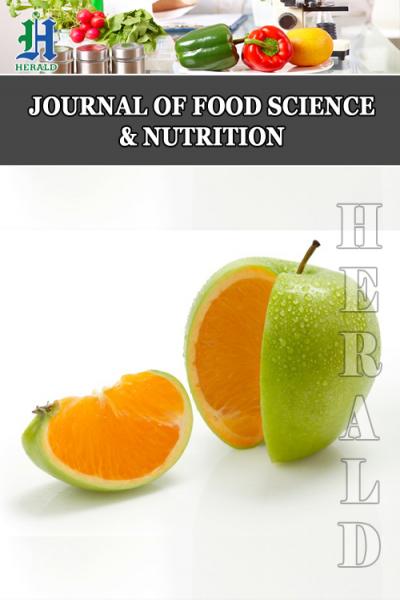
Development of Dragon Fruit Based Ice Cream in Fusion of Dark Chocolate-its Sensory and Nutritional Evaluation
*Corresponding Author(s):
Ramya GangolliFood Science And Nutrition Programme, Department Of Biosciences, Mangalore University, Karnataka, India
Email:ramya.ugrk@gmail.com
Abstract
White dragon fruit, also known as pitaya or Hylocereus undatus, is native to California. It has pink outer skin, white fleshy pulp, and small black seeds. Chocolate made from sugar, cocoa butter, and cocoa solids is known as dark chocolate. The percentage of cocoa in it is higher. The increased health benefits come from ice cream made with dragon fruit and dark chocolate. For the development of dragon fruit-based dark chocolate ice cream, 50% dark chocolate and the dragon fruit (Hylocereus undatus) were utilized. The ice cream has distinct health benefits, and can consume the dragon fruit and dark chocolate safely. The protein, acidity, and solid nonfat content of the ice cream's proximate analysis were examined. The sensory evaluation and shelf life were analyzed up to three weeks, using 20 panel members. Also the antioxidant, minerals and ash test, different properties of dragon fruit were analyzed. The aim of the present investigation was the development of dragon pulp-based ice cream with commercially available dark chocolate to provide a safe consumption of ice cream and in an aspect of health benefits.
Keywords
Dark chocolate; Dragon fruit; Hylocereus undatus, Ice cream; Nutrition
Introduction
The most commonly cultivated vine cactus in the Cactaceae family is normally Hylocereus undatus, which would be native to Mexico and America. Pitaya and "dragon fruit" are common names for it. Additionally, it goes by the name "buahnaga," which means "dragon fruit." Hylocereus undatus fruits are popular worldwide for their abundance of polyphenolic components and antioxidant activity, in addition to their appealing color. In the last two decades, more land has been planted in agriculture as a result of the pitahaya fruit's characteristics, degree of production, and financial benefits. Food and film utilize the plant's stalks, fruits, and flowers [1].
In tropical and subtropical regions all over the world, including Vietnam, China, and Australia, dragon fruit, which originated in northern South America and Mexico, has emerged as a significant crop. Bioactive compounds like phenolic acids, flavonoids, and a small amount of pigments like betalains and anthocyanins are abundant in the fruit (Hylocereus spp). These components contribute to its antioxidant, anti-inflammatory, and antimicrobial properties [2].
Hylocereus undatus, also known as the "dragon fruit" or "white-fleshed pitaya," is a nutritious fruit that is prized for its vibrant appearance and health benefits. It is low in calories but full of essential nutrients like vitamin C and B vitamins in addition to minerals like iron, magnesium, and calcium. Similarly rich in dietary fiber, particularly promotes gut wellness and improves digestion, is pitaya. Additionally, it contains antioxidants like betalains, flavonoids, and phenolic compounds, which aid in the elimination of free radicals and lessen the negative effects of oxidative stress on the body. The substantial amount of betalains in Hylocereus undatus phytochemical composition is notable because it contributes to the plant's anti-inflammatory and antioxidant properties. These phytochemicals have been linked to a lower risk of developing chronic diseases like diabetes, cancer, and cardiovascular disease over time. The seeds of the fruit contain a lot of omega-3 and omega-6 fatty acids, both of which help improve blood circulation and lower cholesterol levels and are beneficial to heart health [3].
Chocolate has been consumed by humans for thousands of years, serving as a treat, medicine, and aphrodisiac. Its consumption continues to rise globally, transcending age and social background. The rich composition of chocolate offers potential health benefits, including antioxidant, anti-inflammatory, anti-microbial, anti-allergenic, and anti-carcinogenic properties. In addition to these benefits, various bioactive ingredients are used in the production of functional chocolate products designed to promote health and cater to the modern consumer's needs and market trends. These products primarily focus on boosting nutraceutical effects, such as antioxidant activity, protein content, and prebiotic benefits [4].
Theobroma, a tropical tree, produces chocolate, which can be eaten raw or processed cacao. Chocolates are increasingly being seen as capable of promoting good health. As these are ideally suited for a chocolate bar's food matrix, complementing the endogenous flavanols, chocolate, could be developed as the ideal delivery system for nutraceuticals and polypills, enhancing health in the form of a tasty treat. Dark chocolate has significant health benefits in coronary heart disease The other health benefits of Dark chocolate includes as antioxidant, improvement in endothelial function, vascular function, insulin sensitivity etc.
Dark chocolate is considered a nutritionally beneficial food, packed with cocoa solids, antioxidants, and minimal additives, making it a healthier option compared to the sugar-heavy white chocolate. Antioxidants like procyanidins, found in abundance in dark chocolate, play a significant role in cellular protection and overall health. Dark chocolate consumption and improved heart function, mainly due to its high flavonoid content. In contrast, white chocolate, which lacks these compounds, may not provide the same cardiovascular benefits. Dark chocolate also has an edge over white chocolate in supporting cognitive health. Dark chocolate intake, enhance the cognitive performance, and better mood. Regarding blood glucose regulation, dark chocolate shows a favorable effect, potentially aiding in glycemic control, while white chocolate, with its high sugar content, lacks these benefits. With the superior nutritional profile of Dark chocolate, antioxidant content, potential cardiovascular advantages, and possible cognitive benefits, dark chocolate stands out as a scientifically supported choice for those seeking a sweet treat with health-promoting properties [5].
Ice cream is a sweetened frozen food typically eaten as a snack or dessert. It is usually made from milk products like milk, cream, emulsifier and stabilizer and often combined with fruits and nuts. Typically, sugar or sugar substitutes are used to sweeten it. Dragon fruit (Hylocereus spp.) has become extremely popular as a nutraceutical due to its appealing color, mouthwatering pulp, and edible black seeds. The dragon fruit ice cream was subjected to proximate analysis and sensory evaluation using a standard procedure that was approved. The proximate analysis report shows, Moisture (67.49%), Carbohydrate (19.21%), Crude Fat (9.30%), Crude Protein (2.73%), Crude Fiber (0.45%), Total Minerals (0.82%), and Energy (171.46%). The amount of vitamin C found is 18.32 milligrams. In the sensory evaluation, the dragon fruit ice cream was found to be acceptable [6].
Ice cream has been selected as a good carrier of beneficial effects through the health-promoting component incorporated into the product to meet the needs of functional food. The majority of people in the globe adore ice cream because it has distinct texture and sensory features. Ice cream is a promising carrier for the unhindered distribution of bioactive elements due to its composition, colloidal form, and low-temperature system. The development of functional ice cream has consolidated numerous health-promoting ingredients such as probiotics, prebiotic, synbiotic, and natural antioxidants (e.g., polyphenols) [7].
As the most popular frozen dairy product, ice cream has significant potential to help improve diets by reducing the intake of certain nutrients linked to obesity and related health issues. Additionally, it provides essential and beneficial nutrients. However, modifying traditional ice cream formulations-whether by reducing or eliminating common ingredients or incorporating less conventional ones-must be done in a way that preserves its sensory qualities and storage stability [8].
Chocolate ice cream is commonly formulated with higher sugar levels than non chocolate flavors to compensate for the inherent bitterness of cocoa. However, bitterness is an essential component of chocolate's complex flavor. Many consumers and health professionals are concerned about the levels of added sugars in food due to the global obesity epidemic. Once a plan for balancing bitterness with health concerns about added sugars has been developed, the next step is to figure out if the product will be liked by the customer [9].
Materials and Methods
White dragon fruits, dark chocolate, fresh cream, condensed milk, rock sugar, vanilla essence were purchased from the local supermarket and the rock sugar was grounded to obtain fine powder.
Antioxidant Test
The antioxidant test was done by phosphomolybdenum method [10]. The sample infusion of the pulp was prepared taking 100mg of dragon fruit pulp in a test tube and adding 10ml of distilled water. The contents were boiled for 8-10 minutes in a water bath. The supernatants were collected and 0.2ml of these infusions was used for the estimation of total antioxidant activity.
The standard solution, which consisted of putting 0.2 to 1.0 milliliters of standard ascorbic acid into clean, dry, and labeled test tubes (S1 to S5), was included in the antioxidant estimation. 0.8ml of the infusion was pipetted to the test tubes ‘T1- T3’. The volume of all the test tubes is made up to 1ml using distilled water. 2ml of reagent mixture was added to all the test tubes. The test tubes are incubated at 95? in water bath for 90 minutes, cooled to room temperature. Optical density was measured at 695nm. Take the concentration of standard ascorbic acid along the X axis and the optical density / absorbance along the Y axis to create a standard graph. The concentration of the infusion was determined and total antioxidant activity expressed in mg/100g.
Ash Content
The dragon fruit was semi-dried by drying it in the sun. The semi dried fruit was taken in a crucible weighing 5.13g and was incinerated on the flame to obtain a charred product. The charred fruit sample was then heated in the muffle furnace at 600? for 3 hours resulting in the dry ash [11].
Test for Minerals
The dry ash solution was prepared for the minerals estimation by the incineration, heating the sample to 600? in the muffle furnace for 3 hours and addition of the distilled HCl and distilled water to the ash and making the ash solution in a volumetric flask.
The iron and phosphorous estimation was conducted for the dragon fruit. The mineral estimation involved the ash solution of the sample i.e., Dragon fruit. The ash solution was prepared from the dry ash by moistening the dry ash with a small amount of distilled water (0.5-1ml) and 5ml of the distilled HCl. The moisture was evaporated to dryness on a boiling water bath. The process was repeated twice and evaporated to dryness on a boiling water bath and was filtered into a 100ml volumetric flask using what man no.40 filter paper. After cooling the volume was made up to 100ml [12].
Estimation of Iron
The iron estimation was performed by the Wong’s method [13], where 1-5ml of the standard solution of Ferrous ammonium sulphate was taken in 5 test tubes. The volume was made up to 5ml using distilled water. The dry ash solution of the dragon fruit was taken in triplicates of 0.5 milliliters. To these test tubes 1ml of 30% sulphuric acid was added followed by 7% potassium per sulphate solution. Then 1.5ml of potassium thiocyanate solution was added and was incubated for 20 minutes at room temperature. The red colored complex obtained and its intensity was measured at 540nm.
Estimation of Phosphorous
The dry ash solution of the sample was taken for estimation. A series of conical flask filled with 1-5ml of standard phosphate solution, the volume was made up to 50ml with distilled water. To each conical flask 2ml of reagent mixture combining the ammonium molybdate and concentrated sulphuric acid was added and 5drops of stannous chloride solution was added and incubated at room temperature for 5minutes. At 690nm, the developed blue color complex's intensity was measured spectrophotometrically [14].
Preparation of White Dragon Fruit-Dark Chocolate Ice Cream
The white dragon fruit were cut and smashed and was refrigerated for about 4-6 hours. The chilled heavy fresh cream was whisked to get the whipped cream consistency with the ice bath underneath. For sweetness, rock sugar powder and condensed milk were added. Vanilla essence was added for its characteristic flavor. The contents were mixed well until it gets thick creamy consistency. The mixture was refrigerated for about 30 minutes to 1 hour. The dark chocolate was melted by using the double boiling technique and it was let to cool. The cream mixture was thoroughly mixed with the melted dark chocolate. The frozen dragon fruit pulp was then added to the mixture and was properly mixed to bring uniform consistency. After being refrigerated for eight hours, it was subjected to sensory and nutritional testing.
Sensory Analysis
The prepared dragon fruit dark chocolate ice cream were evaluated for sensory parameters consisting of characteristics such as appearance, texture, aroma, color, taste, mouth feel, after taste, overall acceptability using nine point hedonistic scale. Twenty members of the panel evaluated the sensory evaluation.
- Acidity Test by Titrable Acidity Method
The titrable acidity method [15], followed for the acidity test. The ice cream sample was melted in the water bath and mixed thoroughly to avoid the incorporation of air bubbles and with the use of pipette, 10ml was transferred into 50ml beaker and 10ml of water was added. It had five drops of the phenolphthalein indicator added to it. It was then rapidly titrated against N/10 sodium hydroxide solution and drop by drop NaOH was added until pale pink color develops / the pH reaches 8.3. The volume of sodium hydroxide consumed was noted down.
- Protein Estimation by Pyne’s Method
A 100ml flask containing 10grams of the ice cream samples was used for the weighing. To it, 10ml of distilled water and 5 drops of phenolphthalein indicator was added. To it, 0.4ml of saturated potassium oxalate was added, mixed and was kept aside for 2-4 minutes without disturbing. The mix was titrated against the standard alkali till it turns to pale pink color or pH 8.5 after the first titration, 2ml of 37% formaldehyde was added and mixed well. It was then titrated against the standard alkali to the same end point as before. The volume of alkali used in the second titration was noted down [16].
- Total Solids
After the sample was added to a clean, empty crucible, it was weighed. The crucible with the sample was heated on a water bath till it gets apparently dry. After that, it was heated for four hours at 100°C in a steam oven. After the complete drying the residue was weighed [17].
Results and Discussion
The combination of Dragon fruit and dark chocolate ice cream was prepared and sensory evaluation was carried out with overall highest acceptance criteria as shown in table 1. The preliminary analysis included the acidity test, protein test and total solids test was performed. The acidity test for the ice cream was found to be 0.153±0.012728%, Whereas the acidity content which showed slightly decreased in content in current study as compared to be 0.19% [18]. Ashwini et al. [6], showed in their study that the protein obtained was 2.73% and 7.73%. Whereas present study showed that, the Protein content was in moderate level as compared to them which was of about 3.57±1.202082%, 0.16-0.23% [18], in edible portion of red dragon fruit and 3.12±0.13 according to [19]. The total solids content was about 3.615±6.257895g, but the total solids was 36.23±2.57g according to [19], and 6.7.49% [6] (Figure 1 & Table 2).
|
Parameter |
Acceptance |
|
Appearance |
8.25±0.109 |
|
Color |
8.1±0.14781 |
|
Texture |
7.475±0.1291 |
|
Aroma |
7.675±0.05799 |
|
Taste |
7.9±0.070756 |
|
Mouth feel |
7.825±0.796332 |
|
After taste |
7.675±0.018854 |
|
Overall acceptability |
7.9±0.045941 |
Table 1: Sensory analysis of dragon fruit- dark chocolate ice cream.
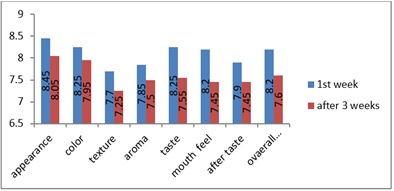 Figure 1: Sensory evaluation for the dragon fruit ice cream.
Figure 1: Sensory evaluation for the dragon fruit ice cream.
|
Acidity Test (%) |
Protein Test (%) |
Total Solids(g) |
|
0.153±0.012728 |
3.57±1.202082 |
3.615±6.257895 |
Table 2: Quality test for the dragon fruit ice cream.
The antioxidant values for the dragon fruit were found to be 0.024±0.00mg/100g, Whereas the antioxidant content was found to be 0.056±0.83mg/100g a slightly decreased in antioxidant components was obtained in current study. The iron estimated was 0.014±0.00mg/100g, intern to this the iron content of dragon fruit was found to be 0.70-1.5mg/100g was observed by [20], and 0.5-0.61mg [18], in edible portion of red dragon fruit. The phosphorous content was found to be 0.763±0.02mg/100g, where, the phosphorous content in dragon fruit was found to be 2-5mg/100g [18], and 30.2-36.1mg [18], in edible portion of red dragon fruit [21-24] (Figures 2-4 & Table 3).
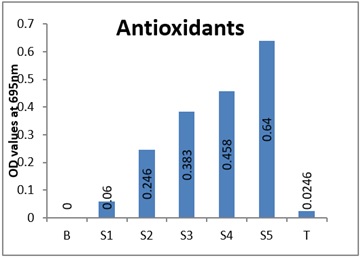 Figure 2: Antioxidants present in dragon fruit sample.
Figure 2: Antioxidants present in dragon fruit sample.
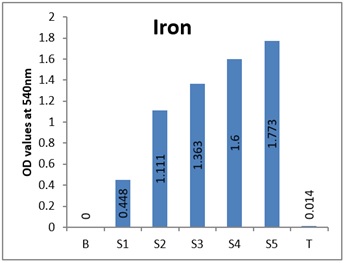 Figure 3: Iron present in dragon fruit sample.
Figure 3: Iron present in dragon fruit sample.
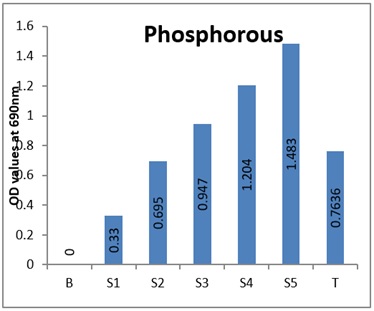 Figure 4: Phosphorous present in dragon fruit sample.
Figure 4: Phosphorous present in dragon fruit sample.
|
Sample |
Antioxidant (mg/100g) |
Iron (mg/100g) |
Phosphorous (mg/100g) |
|
Dragon fruit |
0.024+0.00 |
0.014+0.00 |
0.763+0.02 |
Table 3: Minerals and antioxidant assay for dragon fruit.
Conclusion
The white dragon fruit has high nutritional contents such as high Iron, Phosphorous, Antioxidant in it. The ice cream formulated by the Dragon fruit along with the dark chocolate is a healthy and tasty ice cream option.
Acknowledgment
Authors are thankful to the Food Science and Nutrition Programme, Department of Bio sciences, Mangalore University for the utilization of Laboratory to conduct the research work.
References
- Mande DD, Kumbhare MR, Surana AR (2023) Phytochemical composition, biological activities and nutritional aspects of Hylocereus undatus: A review. Infectious Diseases and Herbal Medicine4: 1-9.
- Chen SY, Xu CY, Mazhar MS, Naiker M (2024) Nutritional Value and Therapeutic Benefits of Dragon Fruit: A Comprehensive Review with Implications for Establishing Australian Industry Standards. Molecules 29:
- Bishoyi AK, Saeed F, Shehzadi U, Shankar A, Balaji J, et al. (2024) Nutritional composition, phytochemical profile, and health benefits of Hylocereus Undatus (pitaya): A comprehensive review. eFood5: 1-20.
- Sar?ta? S, Duman H, Pekdemir B, Rocha JM, Oz F, et al. (2024) Functional chocolate: Exploring advances in production and health benefits. International Journal of Food Science and Technology59: 5303-5325.
- Dehghani P, Taheri F, Asgary S (2024) Decoding the delights: Unraveling the health benefits of dark chocolate in comparison to white chocolate. Functional Food Science-Online4: 119-133.
- Bagade AR, Giri GK, Shingne AW, Usendi PN (2020) In vitro Evaluation of Fungicides, Botanicals and Bio-agents against Colletotrichum lindemuthianum causing Anthracnose of Bean. Int J Curr Microbiol App Sci 9: 3103-3110
- Mohammed NK, Khair MFB, Ahmad NH, Hussin ASM (2022) Ice cream as functional food: A review of health?promoting ingredients in the frozen dairy products. Journal of Food Process Engineering45: 14171.
- Genovese A, Balivo A, Salvati A, Sacchi R (2022) Functional ice cream health benefits and sensory implications. Food Research International161:
- Harwood ML, Loquasto JR, Roberts RF, Ziegler GR, Hayes JE (2013) Explaining tolerance for bitterness in chocolate ice cream using solid chocolate preferences. Journal of dairy science96: 4938-4944.
- Tomovska J, Vllasaku I (2021) Phosphomolybdate test method for antioxidant activity in extracts of animal feed. Balkan Agriculture Congress 2021: 663-672.
- Ismail BP, Nielsen SS (2024) Nielsen's Food Analysis Laboratory Manual. Springer Nature, London, UK.
- Harris GK, Marshall MR (2017) Ash analysis. Food analysis 287-297.
- Tiwari P, Thakur M, Joshi A, Raigond P, Arora B (2022) Development of Iron fortified potato fries through Vacuum assisted processing strategies. Journal of Food Science and Technology59: 4644-4652.
- Cho YH, Nielsen SS (2024) Phosphorus determination by Murphy-Riley method. In Nielsen's Food Analysis Laboratory Manual 2024: 163-165.
- Melia S, Juliyarsi I, Kurnia YF, Pratama YE, Azahra H (2021) Examination of titratable acidity, pH, total lactic acid bacteria and sensory properties in whey fermented with probiotics Pediococcus acidilacticAdvances in Animal and Veterinary Sciences 10: 114-119.
- Zhimomi A, Kumar A, Lalchamliani, Longkumer S (2021) Comparative study of physico-chemical and protein profile of mithun and cattle milk. Centre for agriculture and Bioscience international 60: 220-222.
- Mauer LJ (2024) Moisture and total solids analysis. In Nielsen's Food Analysis 2024: 233-260.
- Archana R, Rani CI, Geetha P, Amuthaselvi G, Muthuvel I, et al. (2023) Value addition in dragon fruit and evaluation of the products (Hylocereus costaricensis). In Biological Forum International. Journal 15: 180-186.
- Susanti D, Suwarto, Suprayogi, Farid N (2022) Drought Stress Tolerance of Indonesian Rice Varieties (Oryza sativa) and Its Kindship Relationship based on Morphological Characters. Journal of Agricultural and Crop Research 10: 52-59.
- Arivalagan M, Karunakaran G, Roy TK, Dinsha M, Sindhu BC, et al. (2021) Biochemical and nutritional characterization of dragon fruit (Hylocereus species). Food Chemistry353:
- Manan EA, Gani SSA, Zaidan UH, Halmi MIE (2019) Characterization of antioxidant activities in red dragon fruit (Hylocereus polyrhizus) pulp water-based extract. Journal of Advanced Research in Fluid Mechanics and Thermal Sciences61: 170-180.
- Hossain FM, Numan SMN, Akhtar S (2021) Cultivation, nutritional value, and health benefits of Dragon Fruit (Hylocereus spp.). International Journal of Horticultural Science and Technology8: 259-269.
- Perween T, Mandal KK, Hasan MA (2018) Dragon fruit: An exotic super future fruit of India. Journal of Pharmacognosy and Phytochemistry7: 1022-1026.
- Raibagkar A, Khandekar S, Vankundre S, Veera M (2020) Formulation and evaluation of dragon fruit ice cream. International Journal of Scientific Research in Engineering and Management 4: 2582-3930.
Citation: Gangolli R, Chinmayi VS, Chandra M (2025) Development of Dragon Fruit Based Ice Cream in Fusion of Dark Chocolate-its Sensory and Nutritional Evaluation. HSOA J Food Sci Nutr 11: 221.
Copyright: © 2025 Ramya Gangolli, et al. This is an open-access article distributed under the terms of the Creative Commons Attribution License, which permits unrestricted use, distribution, and reproduction in any medium, provided the original author and source are credited.
